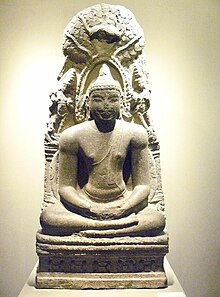
Back شجرة مقدسة Arabic Культавыя дрэвы Byelorussian Pühapuu Estonian Uhripuu Finnish 영목 Korean Pema e shenjtë Albanian Cây thiêng Vietnamese

A sacred tree or holy tree is a tree which is considered to be sacred, or worthy of spiritual respect or reverence. Such trees appear throughout world history in various cultures including the ancient Hindu mythology, Greek, Celtic and Germanic mythologies. They also continue to hold profound meaning in contemporary culture in places like Japan (shinboku), Korea (dangsan namu), India (bodhi tree), and the Philippines, among others. Tree worship is core part of religions which include aspects of animism as core elements of their belief, which is the eco-friendly belief that trees, forests, rivers, mountains, etc have a life force ('anime', i.e., alive) and need to be conserved and used in a sustainable manner.

An example of the continued importance of sacred trees in contemporary urban culture is the 700-year old camphor growing in the middle of Kayashima Station. Locals protested against moving the tree when the railway station had to be expanded, so the station was built around it.[1] The sacred Banyan tree is the national tree of India, and the Bodhi Tree under which the Buddha is said to have meditated in Bodh Gaya, is also revered as sacred.
Sacred trees are some times planted in the sacred groves, which can also have other type of trees, too.[2]
- ^ "Japanese Train Station Protectively Built Around a 700-Year-Old Tree". 27 January 2017.
- ^ Cusack 2011, pp. 171–172.
© MMXXIII Rich X Search. We shall prevail. All rights reserved. Rich X Search